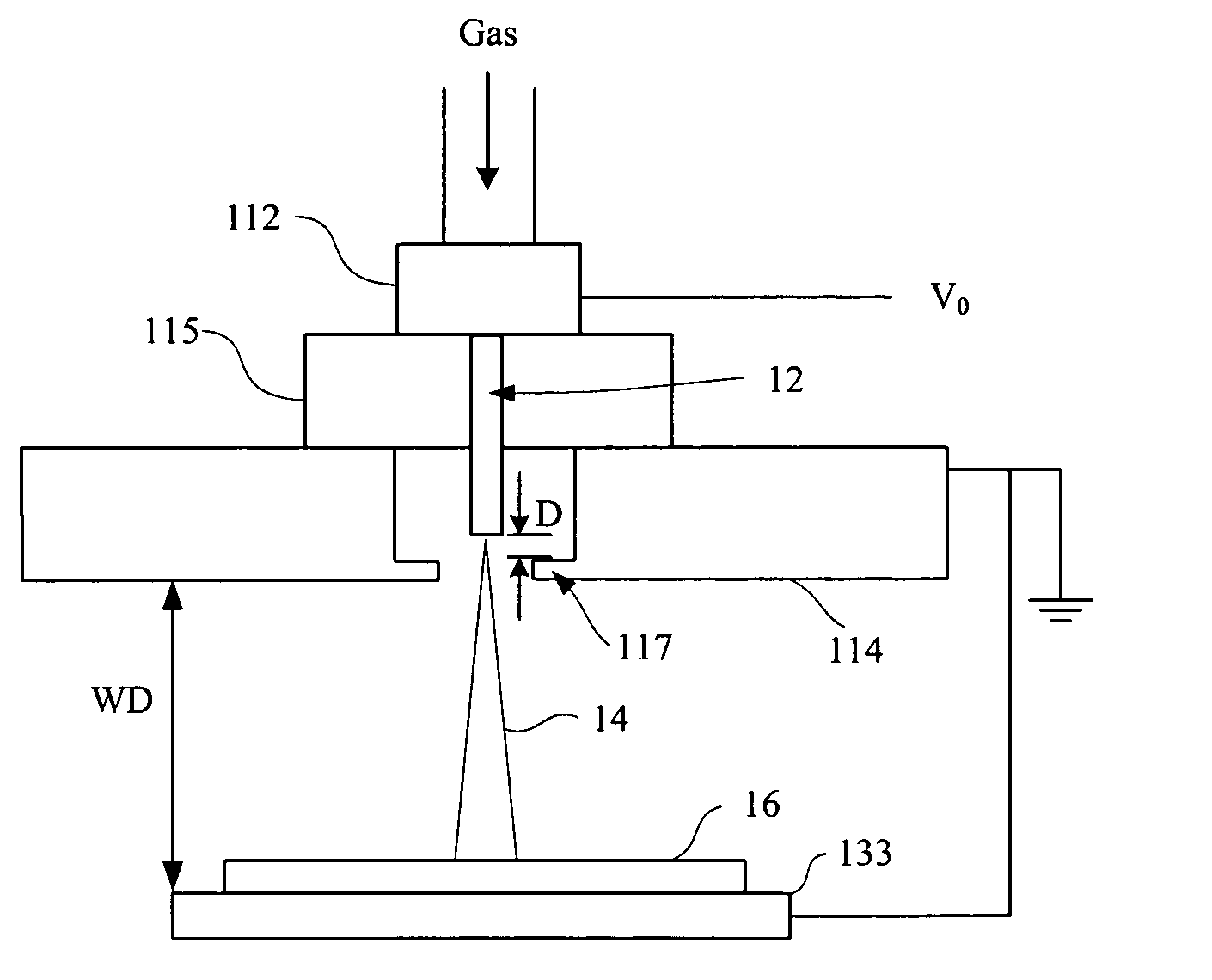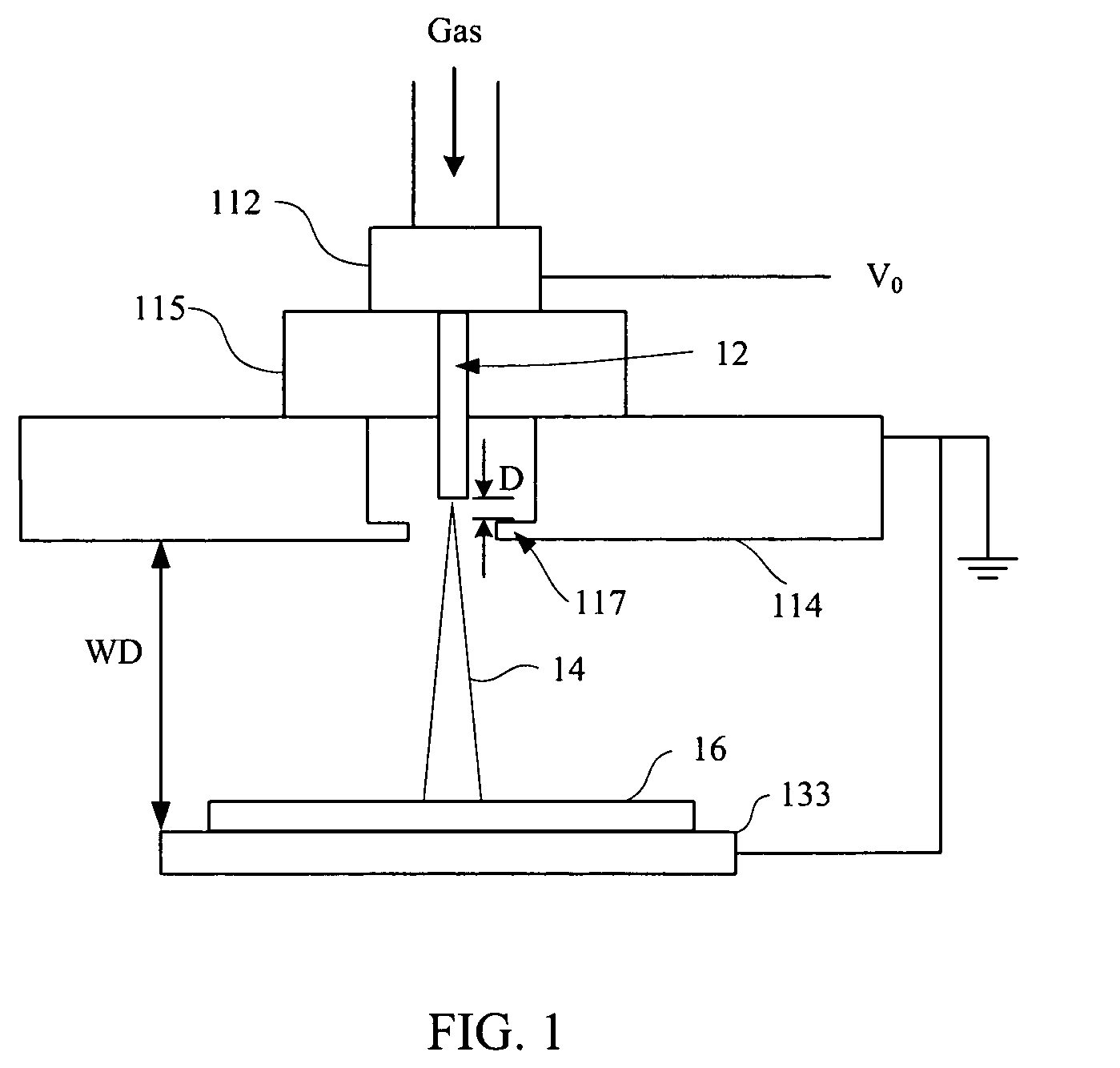Nanopin manufacturing method and nanometer sized tip array by utilizing the method
a nano-tip array and nano-pin technology, applied in the field of nano-pin manufacturing methods, can solve the problems of difficult to increase the brightness use a large amount of chemical reagents, and only 10% of the transmittance of liquid crystal displays, etc., to achieve the effect of low cost, low cost and easy modification of the aspect ratio and the density of fabricated nano-pins
- Summary
- Abstract
- Description
- Claims
- Application Information
AI Technical Summary
Benefits of technology
Problems solved by technology
Method used
Image
Examples
Embodiment Construction
[0020]For manufacturing nanopins, the present invention utilizes crystal anisotropic hardness properties and increases the temperature of samples. For a zinc crystal lattice, the hardness of each crystal plane is somewhat different. Some crystal planes are fragile while zinc atoms on some crystal planes are bound strongly. When the zinc crystal lattice is bombarded by accelerated particles, for example, bombarded by an ion beam, zinc atoms on the fragile crystal planes are easy to be stuck out. But for the crystal planes with great hardness, the zinc crystal lattice is hard to be destructed when bombarded by the ion beam. Since the crystal lattice is at a scale of nanometers, the crystal anisotropic hardness properties can be utilized to fabricate nanopins. In addition, increasing temperature of a metal foil makes the diffusion of surface atoms increasing. Therefore, tip angles of nanopins, formed on the metal foil by ion source dry etching at high temperature, are smaller than thos...
PUM
| Property | Measurement | Unit |
|---|---|---|
| end radius | aaaaa | aaaaa |
| aspect ratio | aaaaa | aaaaa |
| aspect ratio | aaaaa | aaaaa |
Abstract
Description
Claims
Application Information
 Login to View More
Login to View More - R&D
- Intellectual Property
- Life Sciences
- Materials
- Tech Scout
- Unparalleled Data Quality
- Higher Quality Content
- 60% Fewer Hallucinations
Browse by: Latest US Patents, China's latest patents, Technical Efficacy Thesaurus, Application Domain, Technology Topic, Popular Technical Reports.
© 2025 PatSnap. All rights reserved.Legal|Privacy policy|Modern Slavery Act Transparency Statement|Sitemap|About US| Contact US: help@patsnap.com



